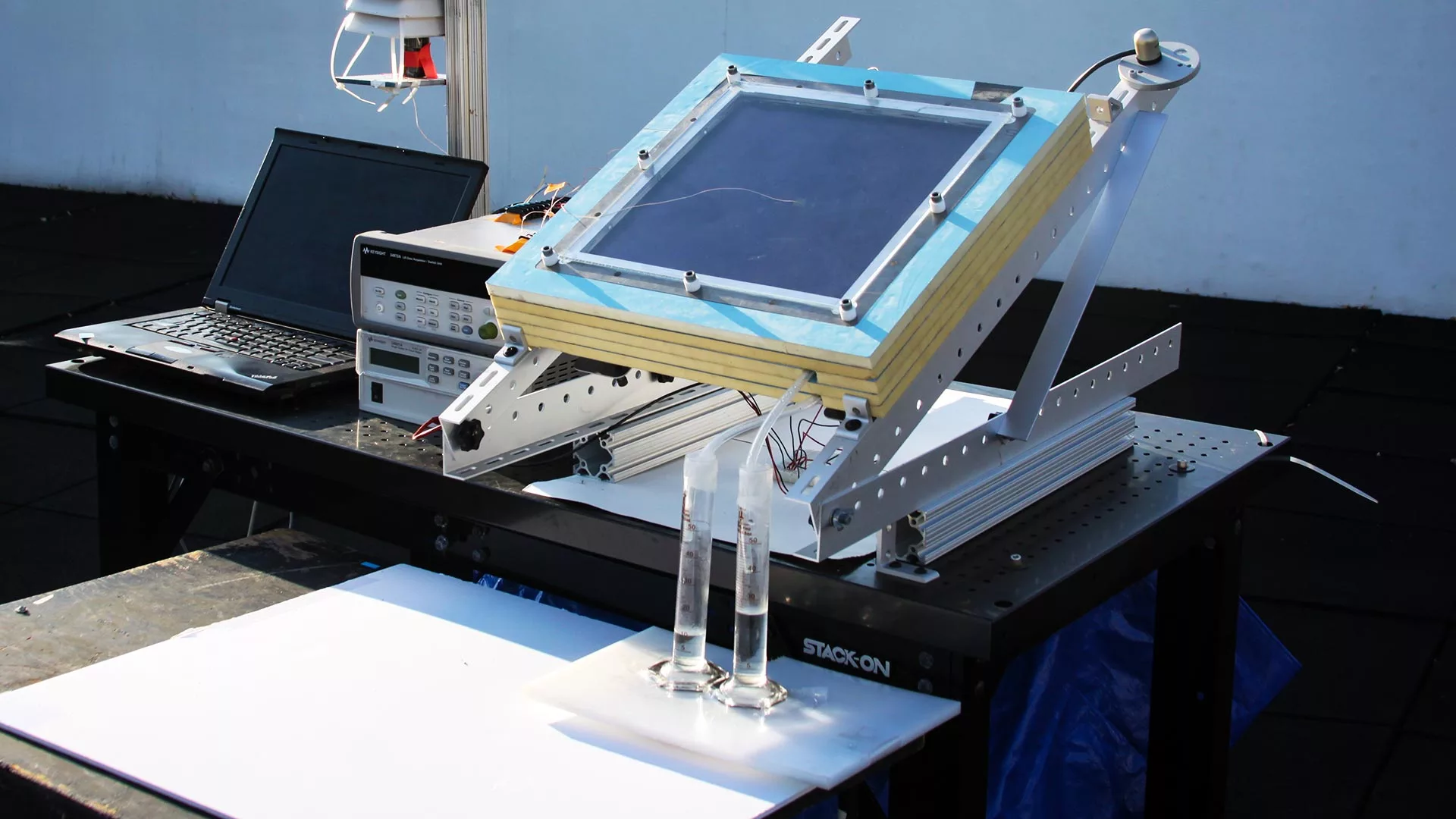WEB DESK, July 12(ABC): Researchers at MIT and elsewhere have significantly boosted the output from a system that can extract drinkable water directly from the air even in dry regions, using heat from the sun or another source.The system, which builds on a design initially developed three years ago at MIT by members of the same team, brings the process closer to something that could become a practical water source for remote regions with limited access to water and electricity. The findings are described today (October 14, 2020) in the journal Joule, in a paper by Professor Evelyn Wang, who is head of MIT’s Department of Mechanical Engineering; graduate student Alina LaPotin; and six others at MIT and in Korea and Utah.
The earlier device demonstrated by Wang and her co-workers provided a proof of concept for the system, which harnesses a temperature difference within the device to allow an adsorbent material — which collects liquid on its surface — to draw in moisture from the air at night and release it the next day. When the material is heated by sunlight, the difference in temperature between the heated top and the shaded underside makes the water release back out of the adsorbent material. The water then gets condensed on a collection plate.
But that device required the use of specialized materials called metal organic frameworks, or MOFs, which are expensive and limited in supply, and the system’s water output was not sufficient for a practical system. Now, by incorporating a second stage of desorption and condensation, and by using a readily available adsorbent material, the device’s output has been significantly increased, and its scalability as a potentially widespread product is greatly improved, the researchers say.
Wang says the team felt that “It’s great to have a small prototype, but how can we get it into a more scalable form?” The new advances in design and materials have now led to progress in that direction.
Instead of the MOFs, the new design uses an adsorbent material called a zeolite, which in this case is composed of a microporous iron aluminophosphate. The material is widely available, stable, and has the right adsorbent properties to provide an efficient water production system based just on typical day-night temperature fluctuations and heating with sunlight.
The two-stage design developed by LaPotin makes clever use of the heat that is generated whenever water changes phase. The sun’s heat is collected by a solar absorber plate at the top of the box-like system and warms the zeolite, releasing the moisture the material has captured overnight. That vapor condenses on a collector plate — a process that releases heat as well. The collector plate is a copper sheet directly above and in contact with the second zeolite layer, where the heat of condensation is used to release the vapor from that subsequent layer. Droplets of water collected from each of the two layers can be funneled together into a collecting tank.

























